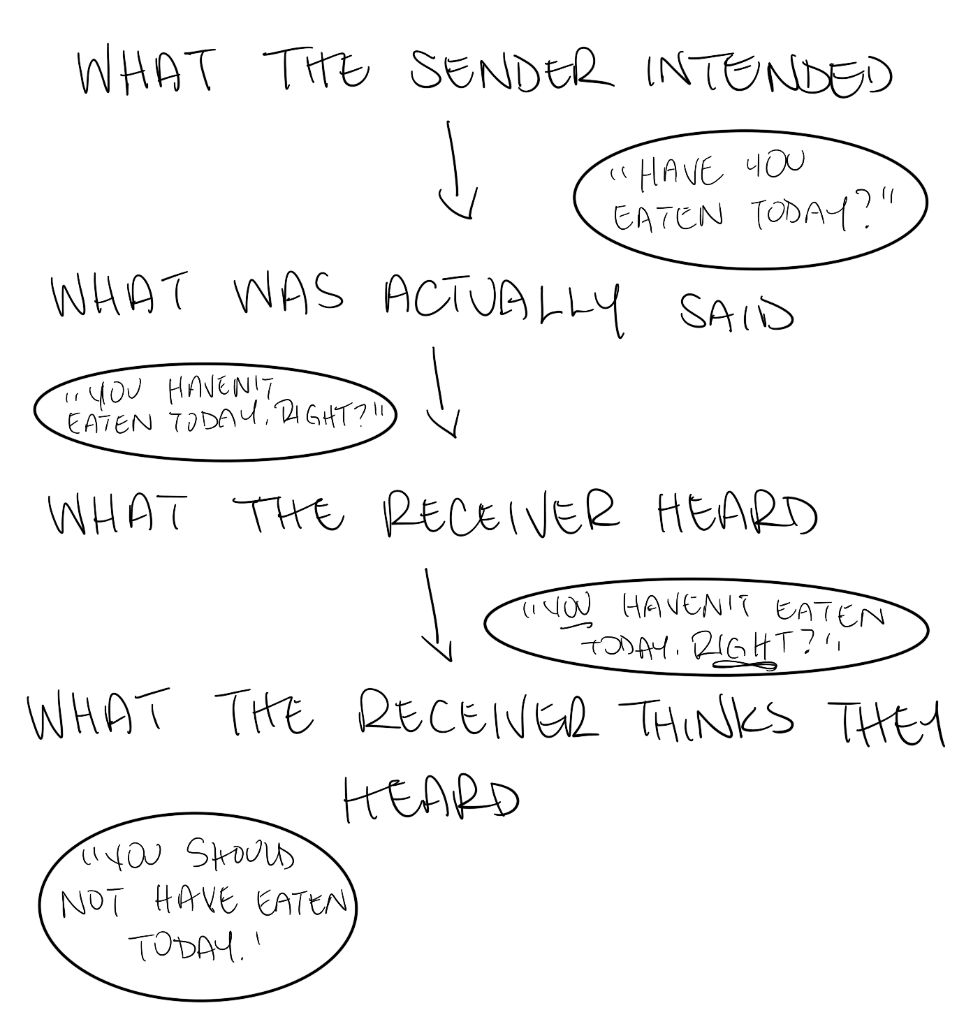Alyssa often likes to ask about the weather and other polite topics while she brings the patient back into the room for the ultrasound. If the patient begins talking about their own self, Alyssa responds in a friendly manner. What type of communication is this?
Social conversation.
What three parties make up the communication triad?
Provider with information (sonographer)
Recipient of information (patient)
Trusted person (family member)
As students, we are being thrown information from all directions all of the time, with the hope that the majority of it will stick. We make efforts through study and connections with each other, because our main purpose as students is this.
Pass exams and solve problems with images.
Oftentimes, new sonographers, like Sam from last week, get so involved in their process that they forget about the nuances of patient care. This creates a rift, or a barrier, in the communication process. What are some common, but important, communication barriers we should be aware of?
Talking too fast.
Using dense medical vocabulary or casual slang.
Speaking in a hostile manner, or letting biases affect how the patient is treated.
Sending an unclear message between verbal and non-verbal communication.
In an ideal world, everyone who is coming in for an ultrasound will be healthy and we will find nothing concerning. Unfortunately, the reality is that we will always be dealing with patients who have received bad news or are in a bad mental space. How should we proceed with patients who may be experiencing grief and fear?
We should be careful, be supportive, be flexible, be kind, and read the situation before moving forward.
To evaluate facts objectively and create a solution through the application of your knowledge and experience, you are using what?
Critical thinking skills!
The three working components in the communication process are the sender, message, and the receiver. While the sender thinks they are sending a clear message, it can often be misinterpreted due to the way the message is said or conveyed. Knowing this, what does the actual flow of the communication look like?

As sonographers, we are a part of a team of people such as nurses, front desk staff, and other sonographers and are constantly providing and seeking information. What are some things we may be looking for from these conversations?
Up to date records, other lab tests, imaging, history, and more!

Jordan is having problems at work balancing the social aspects and the supportive aspects of conversation. They aren't sure when to be social and when to transition to gathering information. As a result, they are sending mixed signals to their patients. When is it appropriate to engage in social conversations versus supportive conversations?
We should start with social conversation to put the patient at ease, and move into supportive conversation afterwards.
Layla is typing up her preliminary report after performing a Doppler on an elderly patient. She is about to send it off to the interpreting physician when she is interrupted by the ordering physician, asking to see her results. Layla is aware that the ordering physician is a different doctor than the interpreting, but the ordering doctor is getting pushy about what she scanned. How should she respond?
She should direct them to the interpreting physician for the results. We are sonographers, not physicians!
As students, it is a given that we are always learning new things. As sonographers, we should seek to use our critical thinking skills by always ________.
Examining images to see if it can be improved.
As health care workers, we need to be aware not just how the patient is feeling around us, but how we are presenting ourselves and our demeanor to our patients. What are some ways we may unintentionally cut off communication?
Looking away from the patient, turning away from the patient, fidgeting with the machines instead of actively listening, interrupting the patient when they're speaking.
For those who have experienced loss, they know that they will often cycle between the stages of grief. Despite this, they are still organized in a certain order. What are the stages of grief?
Stage 1: Denial and Isolation
Stage 2: Anger
Stage 3: Bargaining
Stage 4: Depression
Stage 5: Acceptance
What are some ways we can use collaborative learning?
Share ideas
Collaborate
Interact our peers
Brainstorm
Discuss
Engage in the community
As healthcare workers, we should approach every situation with a keen eye and "read the room" before deciding how to proceed. What two issues interfere and effect communication between patients and sonographers during supportive conversation?
The physical and emotional state of both the patient and the sonographer.
The communication triad can be a very effective tool to use in solving communication problems, but we must always be aware that bringing a third person into the conversation could be breeching HIPAA. What must we do before engaging in the triad to respect the patient's privacy?
Get permission from the patient!
Our main objective when we start working as sonographers is to obtain the best diagnostic images possible through our knowledge of what subjects (5)?
Anatomy, physiology, pathology, knobology, and ultrasound physics.